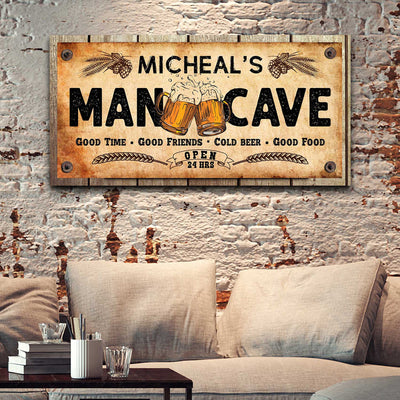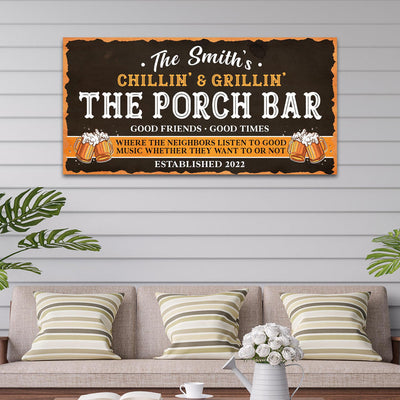Decorating an accent wall is an excellent way to add a touch of personality and style to any room. By choosing the perfect palette, you can create a focal point that enhances the overall aesthetic of your space. In this comprehensive guide, we will walk you through the process of selecting the ideal colors for your accent wall. Whether you prefer bold and vibrant hues or subtle and sophisticated tones, we've got you covered. Let's dive in!
Assessing Your Space

Charlotte Blue Night Skyline Canvas Wall Art
Before embarking on your accent wall journey, it's crucial to assess your space and consider various factors that will influence your color choices. Take into account the size of the room, the amount of natural light it receives, and the existing color scheme. Understanding these elements will help you make informed decisions and ensure a harmonious outcome.
Determining the Purpose
Next, determine the purpose of your accent wall. Are you aiming to create a focal point, highlight a particular architectural feature, or add depth to the room? The purpose will guide your color selection process and dictate the overall ambiance you wish to achieve.
Embracing the Power of Color Psychology
Color psychology plays a significant role in interior design, and it can profoundly impact the atmosphere of a space. Different colors evoke various emotions and moods. For instance, warm colors like red and orange can stimulate energy and passion, while cool colors such as blue and green promote relaxation and tranquility. Consider the desired mood of the room and select colors that align with it.
Harmonizing with the Existing Color Scheme
To ensure a cohesive and visually pleasing look, it's crucial to harmonize your accent wall with the existing color scheme of the room. If your room features a neutral palette, consider using a bold and contrasting color for your accent wall to create a striking visual impact. On the other hand, if your space already includes vibrant hues, opt for a complementary or analogous color to maintain a balanced aesthetic.
Exploring Color Combinations

Ocean Waves Abstract Canvas Wall Art
One of the keys to choosing the perfect palette for your accent wall is exploring different color combinations. Here are a few popular options to inspire you:
Monochromatic Harmony
A monochromatic color scheme involves using different shades and tints of a single color. This creates a sophisticated and cohesive look. For instance, if you choose blue as your accent color, you can incorporate lighter shades of blue for a calming effect or darker shades for a more dramatic impact.
Complementary Contrast
Complementary colors are situated opposite each other on the color wheel. When paired together, they create a vibrant and eye-catching contrast. For example, if your room's primary color is blue, consider a yellow-orange accent wall to create a visually stunning focal point.
Analogous Blend
Analogous colors are adjacent to each other on the color wheel and share similar undertones. They create a harmonious and balanced look when used together. For instance, combining shades of green and blue can result in a serene and natural ambiance.
Testing Colors Samples
Before committing to a specific color for your accent wall, it's crucial to test color samples in your space. Lighting conditions can significantly affect how colors appear. Paint small sections of your wall with the shortlisted colors and observe them during different times of the day. This process will help you choose the color that looks best in your specific environment.
Adding Texture and Patterns
While color is a vital component of accent walls, don't be afraid to experiment with texture and patterns to enhance visual interest. Consider options like textured wallpaper, reclaimed wood panels, or stenciled designs. These elements can elevate the overall aesthetic and create a unique statement.
Conclusion

Decor Elements Feather Bohemian Tribal Canvas Wall Art
Decorating an accent wall is an exciting and creative endeavor that allows you to showcase your personal style. By following the steps outlined in this guide, you can choose the perfect palette for your accent wall with confidence. Remember to assess your space, determine the purpose, consider color psychology, harmonize with the existing color scheme, explore different color combinations, test color samples, and incorporate texture and patterns. Now it's time to unleash your creativity and transform your space with a stunning accent wall!
FAQs
1. How many accent walls should I have in a room?
It is generally recommended to have only one accent wall in a room. Multiple accent walls can create visual clutter and diminish the impact of each individual focal point. Choose a single wall that best suits your design goals and complements the overall room aesthetic.
2. Can I use wallpaper for my accent wall?
Absolutely! Wallpaper can be an excellent choice for accent walls. It offers a wide range of patterns, textures, and colors, allowing you to achieve unique and visually appealing results. Just make sure to properly prepare the wall surface before applying wallpaper for the best outcome.
3. Should I match the accent wall color with my furniture?
While it's not necessary to match the accent wall color with your furniture, it's essential to ensure that the colors harmonize and create a cohesive look. Consider the undertones and overall color scheme of your furniture pieces when selecting the color palette for your accent wall. This will help achieve a balanced and visually pleasing result.




